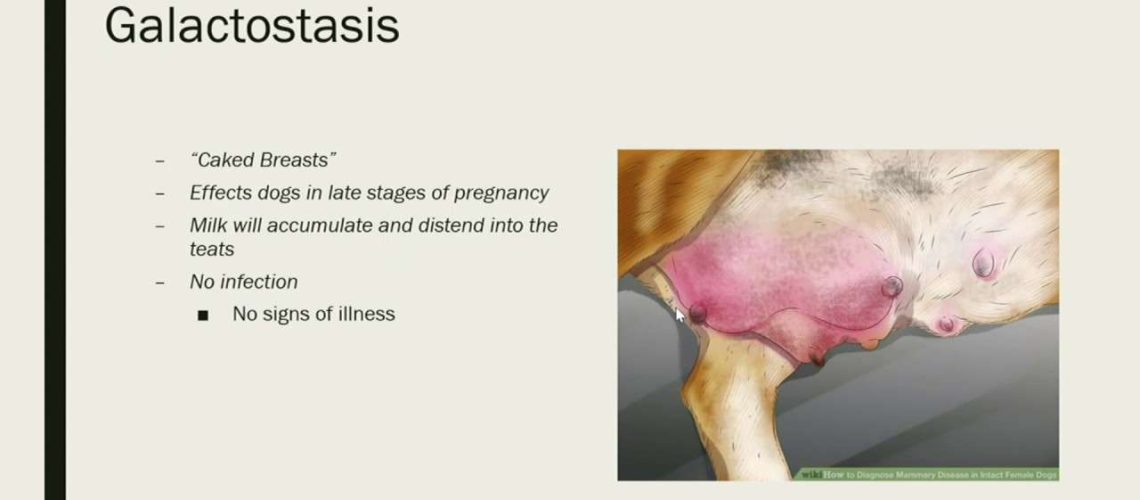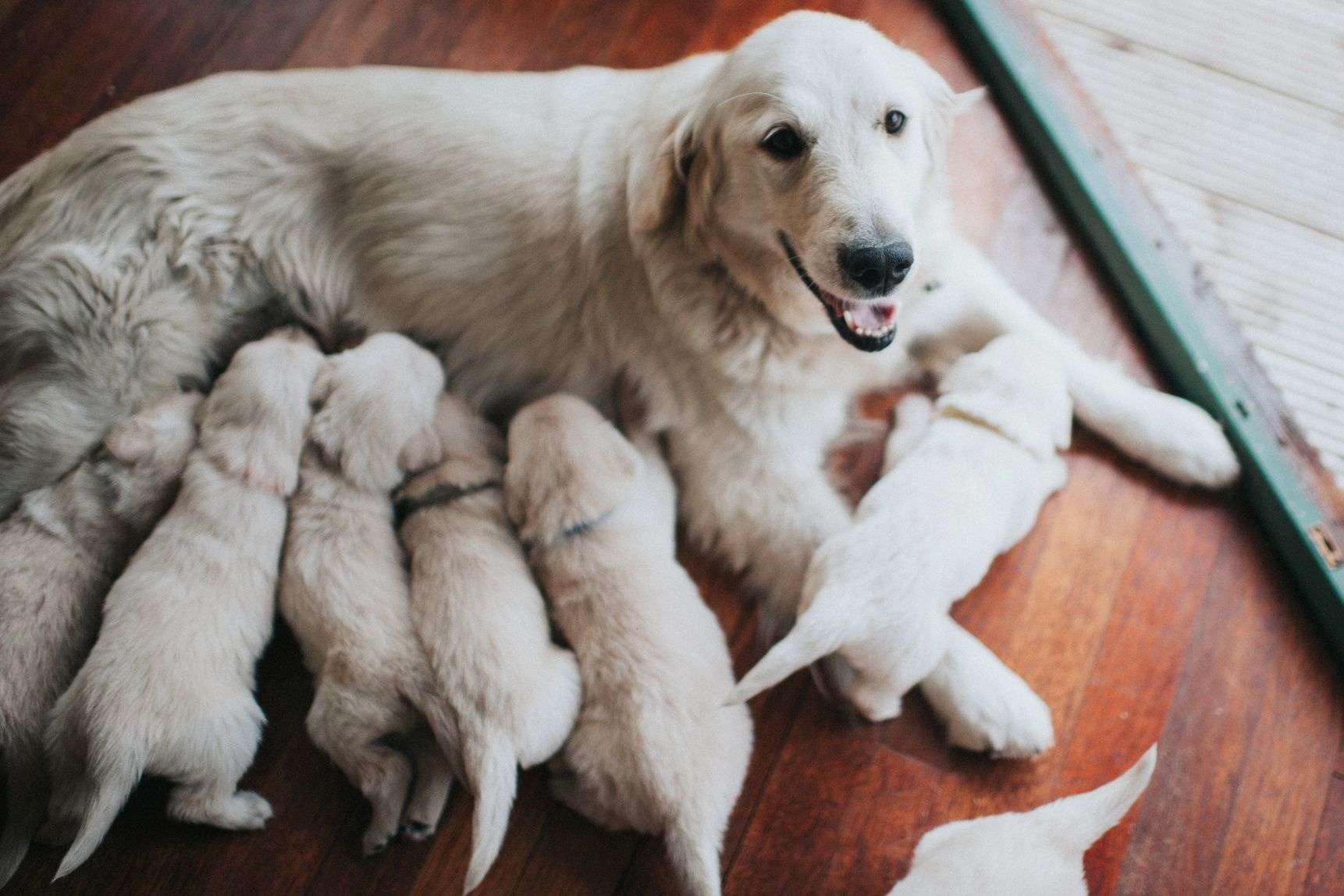Key Takeaways:
- Mastitis is a common condition in female dogs, especially those who have recently given birth or are nursing puppies.
- It is important to monitor for signs of mastitis, such as swollen or painful mammary glands, fever, and changes in milk production.
- Early detection and prompt treatment are crucial in managing mastitis and preventing complications like abscesses or septicemia.
- Treatment typically involves antibiotics to target the infection, along with supportive care like warm compresses and gentle milk expression.
- Preventing mastitis involves maintaining good hygiene during the birthing process, ensuring proper nutrition for the mother dog, and promptly addressing any issues with the puppies' latch or suckling.
Have you ever wondered how to keep your furry friend healthy and happy? Well, understanding the topic of mastitis in dogs is essential for any responsible dog owner. Mastitis, a common condition in female dogs, can cause discomfort and pain if left untreated.
By delving into this subject, you will gain valuable knowledge on how to identify, prevent, and treat mastitis in your beloved pet. Did you know that approximately 20% of female dogs will develop mastitis at some point in their lives? With this alarming statistic in mind, it's crucial to equip yourself with the necessary information to ensure your dog's well-being. So let's dive into the world of mastitis in dogs and discover how we can keep our furry companions healthy and content!
What is mastitis in dogs and why does it happen?
Mastitis in dogs is an infection that affects the mammary glands, which are responsible for producing milk. It can occur when bacteria enters the mammary gland through cracks or injuries in the skin around the nipple. This can happen during nursing puppies or due to trauma to the area. Mastitis can also occur if milk becomes trapped within the gland, creating a breeding ground for bacteria.
When mastitis happens, it causes inflammation, swelling, and pain in the affected mammary gland. The dog may also experience a decrease in appetite and energy levels. It is important to address mastitis promptly as it can lead to complications such as abscesses or even septicemia if left untreated.
Causes of Mastitis
There are several factors that can increase a dog's risk of developing mastitis. These include:
- Poor hygiene: If the nipples and surrounding areas are not kept clean, bacteria can easily enter and cause an infection.
- Trauma: Injuries to the mammary glands, such as bites or scratches from other animals, can introduce bacteria into the tissue.
- Prolonged nursing: If puppies nurse for an extended period of time without proper weaning, it can lead to milk stasis and increase the chances of infection.
- Hormonal changes: Fluctuations in hormone levels during heat cycles or pregnancy can make dogs more susceptible to mastitis.
It is important for dog owners to be aware of these risk factors and take appropriate measures to prevent mastitis from occurring.
Recognizing symptoms of mastitis in your dog
Recognizing the symptoms of mastitis in your dog is crucial for early detection and treatment. Some common signs to look out for include:
- Swollen or enlarged mammary glands: The affected gland may appear red, swollen, and painful to the touch.
- Discharge from the nipple: There may be a discharge of pus or blood from the affected nipple.
- Lethargy and loss of appetite: Dogs with mastitis may become less active and show a decreased interest in food.
- Fever: An elevated body temperature is often present in dogs with mastitis.
If you notice any of these symptoms in your dog, it is important to consult with a veterinarian for a proper diagnosis and treatment plan.
Diagnosing Mastitis
To diagnose mastitis, a veterinarian will typically perform a physical examination of the affected mammary glands. They may also recommend additional tests such as:
- Milk analysis: A sample of milk may be collected and analyzed to determine the presence of bacteria or other abnormalities.
- Blood tests: These can help assess the overall health of the dog and detect any signs of infection or inflammation.
Once a diagnosis is made, appropriate treatment can be prescribed to alleviate the symptoms and resolve the infection.
Preventing mastitis in dogs: Tips and tricks
Proper hygiene and cleanliness
Maintaining good hygiene is crucial in preventing mastitis in dogs. Regularly clean your dog's teats and surrounding areas with a mild, pet-safe cleanser. Avoid using harsh chemicals that can irritate the skin. After cleaning, make sure to thoroughly dry the area to prevent moisture buildup, which can promote bacterial growth.
Avoid overbreeding and early weaning
Overbreeding and early weaning can increase the risk of mastitis in dogs. It is important to allow sufficient time between breeding cycles to give the mother's body enough time to recover. Additionally, puppies should not be separated from their mother too early as this can disrupt the natural weaning process and lead to milk accumulation.
Regular veterinary check-ups
Regular visits to the veterinarian are essential for maintaining your dog's overall health and detecting any potential issues early on. During these check-ups, your vet can examine your dog's mammary glands for any signs of inflammation or infection. They may also provide guidance on proper nutrition and exercise routines that can help prevent mastitis.
Treatments for mastitis in dogs: What to expect
Veterinary examination and diagnosis
When you suspect your dog has mastitis, it is crucial to seek veterinary care promptly. The veterinarian will conduct a thorough examination of your dog's mammary glands, looking for signs of redness, swelling, or discharge. They may also perform diagnostic tests such as a milk culture or ultrasound to determine the specific bacteria causing the infection.
Antibiotics and pain management
Treatment for mastitis typically involves a course of antibiotics prescribed by your veterinarian. These medications are aimed at eliminating the bacterial infection causing the mastitis. Additionally, your vet may prescribe pain medication to alleviate any discomfort or inflammation associated with the condition.
Warm compresses and gentle massage
To help relieve symptoms and promote milk flow, warm compresses can be applied to the affected area. The warmth helps reduce swelling and encourages circulation. Gentle massage can also be beneficial in loosening any clogged ducts and facilitating milk drainage. However, it is important to consult with your veterinarian before attempting any home remedies.
Home remedies and natural treatments for mastitis in dogs
Frequent nursing or hand expression
One of the most effective natural treatments for mastitis in dogs is frequent nursing or hand expression of milk. This helps prevent milk accumulation, reduces inflammation, and promotes healing. Encourage your dog to nurse her puppies regularly or gently express milk from her teats if necessary.
Herbal remedies and supplements
Certain herbal remedies and supplements may aid in reducing inflammation and supporting the immune system during mastitis treatment. Examples include chamomile tea compresses, Echinacea supplements, or garlic-infused oil applied topically. However, it is essential to consult with a veterinarian before using any herbal remedies as they can interact with other medications or have adverse effects.
Note:
While home remedies may provide some relief, they should not replace veterinary care for mastitis in dogs. It is crucial to consult with a professional to ensure proper diagnosis and appropriate treatment.
Is mastitis contagious to other animals or humans?
Mastitis in dogs is generally not contagious to humans or other animals. The bacteria causing mastitis are typically specific to dogs and do not pose a significant risk to human health. However, it is still important to practice good hygiene when handling an infected dog's mammary glands or any discharge present. Wash your hands thoroughly after contact and avoid direct contact with open wounds or broken skin.
Recovery time for dogs with mastitis: What to know
The recovery time for dogs with mastitis can vary depending on the severity of the infection and the individual dog's overall health. With prompt veterinary care and appropriate treatment, most cases of mastitis in dogs show improvement within a few days to a week. However, it is essential to complete the full course of antibiotics as prescribed by your veterinarian to ensure complete eradication of the infection.
During the recovery period, it is crucial to provide your dog with a clean and comfortable environment. Monitor her closely for any signs of worsening symptoms or complications. Follow your veterinarian's instructions regarding medication administration, wound care, and any necessary follow-up appointments.
Remember, early detection and proper treatment are key in ensuring a speedy recovery for your dog. If you notice any concerning changes in your dog's behavior or physical condition during the recovery process, do not hesitate to reach out to your veterinarian for further guidance.
In conclusion, mastitis is a serious infection that can affect female dogs who have recently given birth or are nursing. It is important for dog owners to recognize the signs and seek veterinary care promptly to ensure their pet's health and well-being.
Can mastitis in dogs go away on its own?
While mastitis in dogs is rare, it can be extremely dangerous if not treated promptly. It is crucial to recognize the signs of mastitis in dogs in order to catch it early and seek treatment immediately.
What does early mastitis look like in dogs?
Signs of Mastitis in dogs include affected glands that may contain milk or fluid that appears discolored, bloody, or similar to pus. If the glands are infected, they may appear swollen, warm, firm, discolored, or have broken skin.
Is mastitis serious in dogs?
While mastitis in dogs is less frequent compared to other animals like cattle, if not treated, it can have severe and life-threatening outcomes.
Can mastitis in dogs burst?
"In certain situations, an abscess may develop and eventually burst, causing the release of fluids." Severe cases of mastitis can result in tissue death and the affected area can turn black or purple.
How can I get rid of mastitis fast?
When you have an infection, it is typically necessary to take antibiotics for a duration of 10 days. It is crucial to complete the entire course of medication in order to minimize the chances of the infection recurring. If you continue to experience mastitis symptoms after taking antibiotics, it is important to consult your doctor for further guidance.
What happens if mastitis left untreated?
If mastitis is not properly treated or is caused by a blocked milk duct, it can lead to the formation of an abscess, which is a collection of pus in the breast. Surgical drainage is typically necessary to treat an abscess. To prevent this complication, it is important to consult with your doctor as soon as you experience any signs or symptoms of mastitis.

















